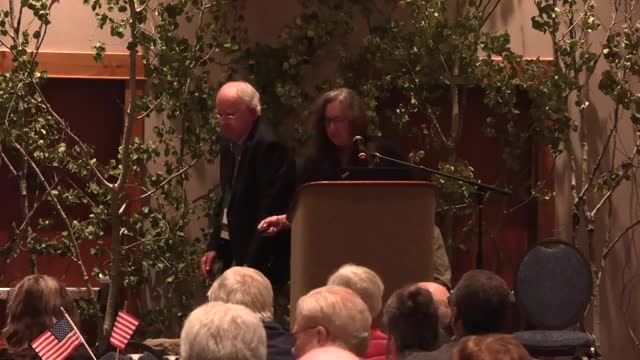Historians say civil‑rights era and later programs diversified Forest Service workforce but leadership lagged
October 15, 2025 | Missoula, Missoula County, Montana
This article was created by AI summarizing key points discussed. AI makes mistakes, so for full details and context, please refer to the video of the full meeting. Please report any errors so we can fix them. Report an error »

Donna Sinclair, a historian who has studied Forest Service staffing, told a Missoula panel that the agency’s workforce diversified substantially beginning in the 1960s and 1970s as environmental mandates and civil‑rights laws opened new roles for women and people of color.
Sinclair said the agency historically had a homogeneous leadership of white men but that job programs, direct hires and internal civil‑rights efforts produced measurable change: she cited that by 1980 women comprised about 28% of the workforce and minorities nearly 10%, up from very low numbers in the 1960s. She described early pioneers, including field employees who faced segregation and barriers that persisted into the 1970s.
Sinclair said leaders such as special civil‑rights staff created systems for accountability and targeted recruitment that broadened the agency’s esprit de corps. She noted programs that partnered with historically Black colleges and tribal institutions and the creation of employee networks and special emphasis groups for minority and disability communities.
The panel discussed later retrenchment: Sinclair and other speakers said support for nontraditional employees has waxed and waned and that leadership diversity lags overall workforce change. Panelists and audience members also reported that some diversity data and related web content were not accessible at the time of the session, and they urged use of archives and external repositories to preserve historical documentation.
Sinclair recommended continued institutional investment in targeted hiring, training and accountability to maintain a workforce that reflects the public the agency serves.
Sinclair said the agency historically had a homogeneous leadership of white men but that job programs, direct hires and internal civil‑rights efforts produced measurable change: she cited that by 1980 women comprised about 28% of the workforce and minorities nearly 10%, up from very low numbers in the 1960s. She described early pioneers, including field employees who faced segregation and barriers that persisted into the 1970s.
Sinclair said leaders such as special civil‑rights staff created systems for accountability and targeted recruitment that broadened the agency’s esprit de corps. She noted programs that partnered with historically Black colleges and tribal institutions and the creation of employee networks and special emphasis groups for minority and disability communities.
The panel discussed later retrenchment: Sinclair and other speakers said support for nontraditional employees has waxed and waned and that leadership diversity lags overall workforce change. Panelists and audience members also reported that some diversity data and related web content were not accessible at the time of the session, and they urged use of archives and external repositories to preserve historical documentation.
Sinclair recommended continued institutional investment in targeted hiring, training and accountability to maintain a workforce that reflects the public the agency serves.
View full meeting
This article is based on a recent meeting—watch the full video and explore the complete transcript for deeper insights into the discussion.
View full meeting
